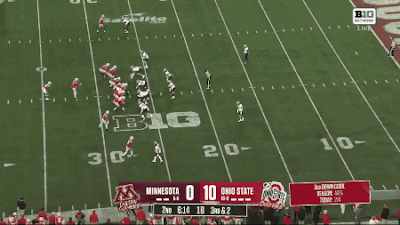P.J. Fleck has twice shown he can build a winning team at Minnesota. His ability to do it a third time will likely determine whether at the end of next season he is still the Gophers' head coach. He comes off his first sub-.500 full season since his debut, a fall that simultaneously was foreseeable and still came up short of even modest expectations.
Depending on one's perspective, Minnesota will have new starters at three offensive positions and three defensive positions. Inexperience was the story of 2023, which means experience will be the story entering 2024. Whether that translates to substantial improvement is the key to answering the question: Are the pieces in place but just weren't ready yet, or has Fleck run out of steam?
At one of the six positions turning over, the Gophers will need no additional help: While their best overall player, Tyler Nubin, departs, three underclassmen saw time at boundary safety this season. Veteran Craig McDonald, who hardly played after arriving from Auburn over the summer, will be back. Four-star recruit Koi Perich could also be part of the picture, assuming he signs. There is healthy competition at the back of the secondary.
Other departures do not leave so many options. Between now and the next fall camp, players will transfer from the U of M. This happens often, which Fleck has made or accepted as part of how he does his business. This can thin the depth chart. For example, Braelen Oliver and Donald Willis' departures made the situation at linebacker dicier to the point of a borderline crisis after a series of injuries.
The transfer market goes both ways, though, and Minnesota has been unafraid to plug holes with players leaving other programs. Sometimes, they have hit; sometimes, they have not. But Minnesota will surely seek to reload this way again. With that in mind, here are some places where Minnesota may want reinforcements.
In this post, players are referred to by their class (freshman, sophomore, etc.) entering the 2024 season. This practice may be slightly confusing, but since this covers the 2024 roster, it is better than the alternative.
Quarterback
Potential need: immediate contributor and depth
In the interest of transparency: If it seems I have buried the lede a bit, it is because this post was about 99-percent done as of Tuesday morning. For whatever reason, I chose to wait to publish it.
That decision prevented this post from becoming instantly outdated, as Athan Kaliakmanis announced Tuesday his intention to transfer from Minnesota. Hours later, backup Drew Viotto did the same.
These departures came a day after the Gophers showed their cards by offering a scholarship to New Hampshire graduate-transfer Max Brosmer. Fleck reportedly could not guarantee Kaliakmanis the starting job after an inconsistent 2023, informing the quarterback room that he would look for transfers.
As a result of Kaliakmanis and Viotto leaving, the Gophers will have two quarterbacks on the roster entering the bowl game. With Cole Kramer participating in Senior Day (despite having one more year of eligibility), it is likely that redshirt-freshman Max Shikenjanski will be the only quarterback on the team who will remain next season. There is just one quarterback in the incoming recruiting class, so Minnesota will need to find a starter and a backup.
So far, the list of quarterbacks putting their names in the portal is mostly full of veterans who lost a first-string job (Will Howard, Max Johnson, Noah Kim), lost their coach (Will Rogers, Brendan Sorsby, Dexter Williams II), or want one more shot to play after a late-career injury (Gerry Bohanon, Spencer Petras, Tyler Shough). Most are not appealing, but Brosmer, Rogers, and Holy Cross' Matthew Sluka show that talented quarterbacks can hit the market. More surely will. Attracting the right one will be the most important task this offseason.







